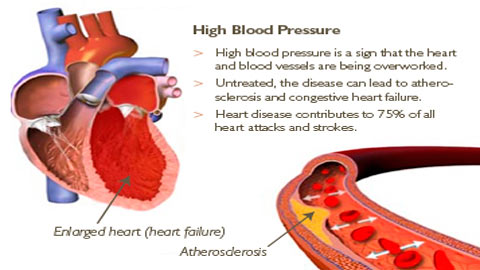Use surgery to treat high blood pressure
Doctors have found a surgical treatment for hypertension that can help high blood pressure patients reduce their dose, even stop taking medication.

Hypertension is a manifestation of blood vessels and the heart must work overloaded and can lead to many dangerous diseases.Photo: eninsulacardiology
High blood pressure increases the risk of cardiovascular disease, stroke, and kidney failure. In general, the higher the blood pressure, the greater the risk of disease.
Improving your lifestyle by losing weight when needed, exercising regularly, quitting smoking and reducing the amount of salt in your diet can reduce high blood pressure, but many cases require medication treatment.
An estimated 15 million Britons with hypertension and drugs to treat high blood pressure are among the most commonly prescribed drugs.
For some people, blood pressure remains high even if they eat less salt and take medication regularly.
In these patients the nervous system that controls sending signals from the brain to the kidneys tells the kidneys to retain a large amount of salt in the blood, increasing the volume of blood, causing a pressure increase. At the same time, the kidneys will also produce hormones that cause shrinkage or dilated blood vessels. This contraction and expansion also affects blood pressure.
The new treatment is designed to interfere with nerve signals that are transmitted to the kidney by destroying the nerve responsible for transmitting this signal.
According to this therapy, the patient will be put a wire into the blood vessel wall and into the artery inside the kidney. From here the wire will be used to create a series of small heating inside the vascular wall, destroying the nerves that run along the outside of the vascular wall.
Heaters with a range of only about 1mm will have heat equivalent to heat when you cut your candle with one finger. A series of heating will be carried out along the inside of the arteries leading to each kidney.
The blood vessel itself cannot support severe damage, but the blood flow inside it can cool the burners, similar to when we burn our fingers under a tap. Therefore, blood vessels will not be damaged when these burns occur. But on the other hand, this heat is enough to affect the nerves of blood vessel walls.
Destroyed signaling nerves break the link between the kidney and the brain. Whenever the link between the brain and kidney is interrupted, the nerve signals that raise blood pressure will stop.
Initial results suggest that it can take 1 to 3 months for this therapy to affect blood pressure.
For some patients this means that their blood pressure will react to the medication and for other patients, this means they can reduce the dose or even stop the use of the drug.
Blood pressure is expressed by 2 parameters, systolic and diastolic. Systolic, the first parameter, reflects the pressure in the arteries when the heart beats. Diastolic, is the pressure between beats of the heart.
Normal blood pressure has a measured systolic and diastolic parameters of 120/80 with most healthy people, without any disease and it can range between 130/80 and 140/90. Blood pressure between 140/90 and 160/100 is slightly increased and over 160/100 is too high.
- Find a simple 'medicine' to treat high blood pressure
- What is high blood pressure for each subject?
- Find out the secret of increasing blood pressure
- Cocoa is good for high blood pressure patients
- What should I pay attention to on New Year's Day?
- Sleep immediately after lunch is prone to high blood pressure
- Wild flowers treat high blood pressure
- High blood pressure increases the risk of dementia in middle age by 45%
- There is a link between sleep and high blood pressure
- Use blood pressure monitor properly
- Eating habits affect high blood pressure
- 9 foods that help lower blood pressure
 Green tea cleans teeth better than mouthwash?
Green tea cleans teeth better than mouthwash? Death kiss: This is why you should not let anyone kiss your baby's lips
Death kiss: This is why you should not let anyone kiss your baby's lips What is salmonellosis?
What is salmonellosis? Caution should be exercised when using aloe vera through eating and drinking
Caution should be exercised when using aloe vera through eating and drinking